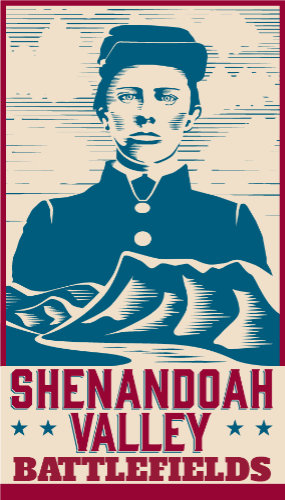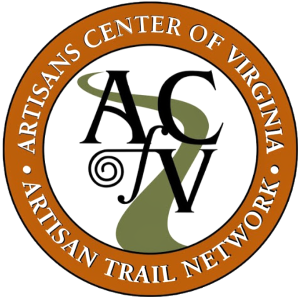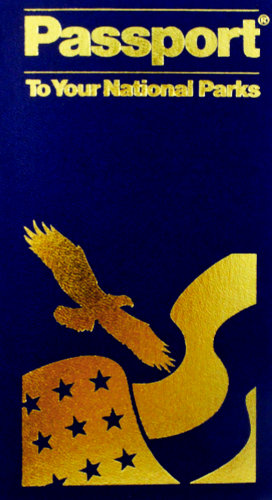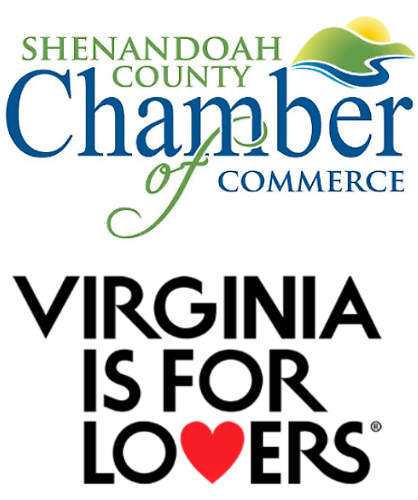Shenandoah Valley Cultural Heritage Museum
Shenandoah Valley
Cultural Heritage Museum
Could have spent all day here. Really superb, Thank you (p. Invernes Scotland)
Thank you for saving history
Love your brooms
My second time to the Mill. So interesting!
We truly believe the museum is historic and worthwhile to pursue
Good job!!!
Thanks for having us. This place is COOL!
One of the best local history Museums I have ever visited. Every display was a fun window into the past. It also has the very best collection of American Red Cross artifacts of any single place I have ever visited.
I hope this place is around for a long time, as I want to bring other history lovers to this treasure.
This is one of the best museum of this kind we have visited in 30 years travel cross country – be proud. The movie was so unique. (From: a museum curator in New Hampshire)
One of the best! We will be back
Friendly staff. Beautiful museum
Spectacular preservation and use

By Dan Harshman
Wood carving is one of the oldest and widespread forms of art. The fact that almost everyone had contact with the material and could learn the process of carving; along with the relative durability of the final product; wood carving has been practiced in almost every culture since the earliest of times.
If you have ever come off the elevator on the second floor of the Museum at the Edinburg Mill and been startled by the silent figure standing in the corner; you have experienced first hand how a simple piece of wood can be transformed by the wood carver. And you have also met our Cigar Store “Chief”.
I must point out that these days the use of a cigar store Indian isn’t necessarily considered politically correct. That being said, the Chief was in need of a home and we were happy to help him out; it was just the right thing to do.
Way back in 1667 Europe, King Charles II passed a law forbidding the use of overhead projecting signs because of the danger to those passing under them. This, along with the general illiteracy of the time led early European shop owners to use descriptive emblems and figures to advertise what they were offering. This might be a red and white barber pole for the barber shop, three gold balls for a pawn shop, or a cigar store Indian for the tobacco shop.
The connection of the American Indian and Tobacco came from the fact that the Native American Indians introduced tobacco to the Europeans; although, the early cigar store “Indians” looked more like Africans with feathered headdresses due to the fact that most of the European carvers had never seen a Native American Indian. These early carvings were often called “Virginians” by those in the tobacco trade.
This changed over the years as more of the carvers made the trip from Europe to Virginia and the Colonies. Professional carvers would often pay for their transatlantic voyage by carving new, or maintaining existing, figureheads and masts during their voyage. We are all familiar with the prominent carved figureheads that adorned the bow of early ocean sailing vessels. From around 1760 to 1880 these were often life-size figures, either realistic portraits of prominent historical figures or mythical beings.
1827 saw the first transatlantic trip of a steam powered vessel; which began the decline in the great sailing ships and the need for the wood carver’s figureheads. Many wood carvers turned their skills to new marketing enterprises like the cigar store Indians. It is estimated that more than 100,000 were carved in America during the late 1800s.
Often a customer would remember the look and quality of a specific wooden Indian over the actual product being sold. In addition to standing on the sidewalk outside a tobacco shop the carvings found their way into high class cigar friendly smoking rooms and the lobbies of fashionable hotels.
As you can imagine, the various wood carvers each tried to out do each other and have their work chosen by a business.
Some even became known for a specific style like a “V” shape
headdress, a leaning figure, or an Indian princess. The American made cigar store Indians were clothed in fringed buckskins, draped with blankets, decorated with feathered headdresses, sometimes shown holding tomahawks, bows, arrows or spears, as well as a handful of cigars. Their facial features rarely resembled members of any particular American Indian tribe.
The carvings were designed to capture the attention of people walking by; informing them that tobacco was sold inside. It has been said that the average cigar smoker in America in the late 1800s couldn’t read the words “Tobacconist Shop.” Visual trade signs were essential as stand-ins for written signs that might have been incomprehensible to potential customers, many of them immigrants.
The cigar store Indian became less common during the 20th century because of things like sidewalk obstruction laws that date back as far as 1911. Later causes were due to higher manufacturing costs, restrictions on tobacco advertising and an increased sensitivity toward depictions of Native Americans. Cigar store Indians moved on to antique shops and museums like ours. Many also were destroyed during scrap drives for metal and wood during World War I and II.
Cigar store figures are now considered folk art with some becoming collector’s items that sell for 100s of thousands of dollars. Our Chief is more likely a replica. Even so, we are pleased that he wandered into our little museum and seems to like his new home. Stop in and say hello.
Could have spent all day here. Really superb, Thank you (p. Invernes Scotland)
Thank you for saving history
Love your brooms
My second time to the Mill. So interesting!
We truly believe the museum is historic and worthwhile to pursue
Good job!!!
Thanks for having us. This place is COOL!
One of the best local history Museums I have ever visited. Every display was a fun window into the past. It also has the very best collection of American Red Cross artifacts of any single place I have ever visited.
I hope this place is around for a long time, as I want to bring other history lovers to this treasure.
This is one of the best museum of this kind we have visited in 30 years travel cross country – be proud. The movie was so unique. (From: a museum curator in New Hampshire)
One of the best! We will be back
Friendly staff. Beautiful museum
Spectacular preservation and use

By Dan Harshman
Wood carving is one of the oldest and widespread forms of art. The fact that almost everyone had contact with the material and could learn the process of carving; along with the relative durability of the final product; wood carving has been practiced in almost every culture since the earliest of times.
If you have ever come off the elevator on the second floor of the Museum at the Edinburg Mill and been startled by the silent figure standing in the corner; you have experienced first hand how a simple piece of wood can be transformed by the wood carver. And you have also met our Cigar Store “Chief”.
I must point out that these days the use of a cigar store Indian isn’t necessarily considered politically correct. That being said, the Chief was in need of a home and we were happy to help him out; it was just the right thing to do.
Way back in 1667 Europe, King Charles II passed a law forbidding the use of overhead projecting signs because of the danger to those passing under them. This, along with the general illiteracy of the time led early European shop owners to use descriptive emblems and figures to advertise what they were offering. This might be a red and white barber pole for the barber shop, three gold balls for a pawn shop, or a cigar store Indian for the tobacco shop.
The connection of the American Indian and Tobacco came from the fact that the Native American Indians introduced tobacco to the Europeans; although, the early cigar store “Indians” looked more like Africans with feathered headdresses due to the fact that most of the European carvers had never seen a Native American Indian. These early carvings were often called “Virginians” by those in the tobacco trade.
This changed over the years as more of the carvers made the trip from Europe to Virginia and the Colonies. Professional carvers would often pay for their transatlantic voyage by carving new, or maintaining existing, figureheads and masts during their voyage. We are all familiar with the prominent carved figureheads that adorned the bow of early ocean sailing vessels. From around 1760 to 1880 these were often life-size figures, either realistic portraits of prominent historical figures or mythical beings.
1827 saw the first transatlantic trip of a steam powered vessel; which began the decline in the great sailing ships and the need for the wood carver’s figureheads. Many wood carvers turned their skills to new marketing enterprises like the cigar store Indians. It is estimated that more than 100,000 were carved in America during the late 1800s.
Often a customer would remember the look and quality of a specific wooden Indian over the actual product being sold. In addition to standing on the sidewalk outside a tobacco shop the carvings found their way into high class cigar friendly smoking rooms and the lobbies of fashionable hotels.
As you can imagine, the various wood carvers each tried to out do each other and have their work chosen by a business.
Some even became known for a specific style like a “V” shape
headdress, a leaning figure, or an Indian princess. The American made cigar store Indians were clothed in fringed buckskins, draped with blankets, decorated with feathered headdresses, sometimes shown holding tomahawks, bows, arrows or spears, as well as a handful of cigars. Their facial features rarely resembled members of any particular American Indian tribe.
The carvings were designed to capture the attention of people walking by; informing them that tobacco was sold inside. It has been said that the average cigar smoker in America in the late 1800s couldn’t read the words “Tobacconist Shop.” Visual trade signs were essential as stand-ins for written signs that might have been incomprehensible to potential customers, many of them immigrants.
The cigar store Indian became less common during the 20th century because of things like sidewalk obstruction laws that date back as far as 1911. Later causes were due to higher manufacturing costs, restrictions on tobacco advertising and an increased sensitivity toward depictions of Native Americans. Cigar store Indians moved on to antique shops and museums like ours. Many also were destroyed during scrap drives for metal and wood during World War I and II.
Cigar store figures are now considered folk art with some becoming collector’s items that sell for 100s of thousands of dollars. Our Chief is more likely a replica. Even so, we are pleased that he wandered into our little museum and seems to like his new home. Stop in and say hello.
• Handicapped Accessible • Elevator, Ramps & Chair-lift • Ample Parking

By Dan Harshman
Wood carving is one of the oldest and widespread forms of art. The fact that almost everyone had contact with the material and could learn the process of carving; along with the relative durability of the final product; wood carving has been practiced in almost every culture since the earliest of times.
If you have ever come off the elevator on the second floor of the Museum at the Edinburg Mill and been startled by the silent figure standing in the corner; you have experienced first hand how a simple piece of wood can be transformed by the wood carver. And you have also met our Cigar Store “Chief”.
I must point out that these days the use of a cigar store Indian isn’t necessarily considered politically correct. That being said, the Chief was in need of a home and we were happy to help him out; it was just the right thing to do.
Way back in 1667 Europe, King Charles II passed a law forbidding the use of overhead projecting signs because of the danger to those passing under them. This, along with the general illiteracy of the time led early European shop owners to use descriptive emblems and figures to advertise what they were offering. This might be a red and white barber pole for the barber shop, three gold balls for a pawn shop, or a cigar store Indian for the tobacco shop.
The connection of the American Indian and Tobacco came from the fact that the Native American Indians introduced tobacco to the Europeans; although, the early cigar store “Indians” looked more like Africans with feathered headdresses due to the fact that most of the European carvers had never seen a Native American Indian. These early carvings were often called “Virginians” by those in the tobacco trade.
This changed over the years as more of the carvers made the trip from Europe to Virginia and the Colonies. Professional carvers would often pay for their transatlantic voyage by carving new, or maintaining existing, figureheads and masts during their voyage. We are all familiar with the prominent carved figureheads that adorned the bow of early ocean sailing vessels. From around 1760 to 1880 these were often life-size figures, either realistic portraits of prominent historical figures or mythical beings.
1827 saw the first transatlantic trip of a steam powered vessel; which began the decline in the great sailing ships and the need for the wood carver’s figureheads. Many wood carvers turned their skills to new marketing enterprises like the cigar store Indians. It is estimated that more than 100,000 were carved in America during the late 1800s.
Often a customer would remember the look and quality of a specific wooden Indian over the actual product being sold. In addition to standing on the sidewalk outside a tobacco shop the carvings found their way into high class cigar friendly smoking rooms and the lobbies of fashionable hotels.
As you can imagine, the various wood carvers each tried to out do each other and have their work chosen by a business.
Some even became known for a specific style like a “V” shape
headdress, a leaning figure, or an Indian princess. The American made cigar store Indians were clothed in fringed buckskins, draped with blankets, decorated with feathered headdresses, sometimes shown holding tomahawks, bows, arrows or spears, as well as a handful of cigars. Their facial features rarely resembled members of any particular American Indian tribe.
The carvings were designed to capture the attention of people walking by; informing them that tobacco was sold inside. It has been said that the average cigar smoker in America in the late 1800s couldn’t read the words “Tobacconist Shop.” Visual trade signs were essential as stand-ins for written signs that might have been incomprehensible to potential customers, many of them immigrants.
The cigar store Indian became less common during the 20th century because of things like sidewalk obstruction laws that date back as far as 1911. Later causes were due to higher manufacturing costs, restrictions on tobacco advertising and an increased sensitivity toward depictions of Native Americans. Cigar store Indians moved on to antique shops and museums like ours. Many also were destroyed during scrap drives for metal and wood during World War I and II.
Cigar store figures are now considered folk art with some becoming collector’s items that sell for 100s of thousands of dollars. Our Chief is more likely a replica. Even so, we are pleased that he wandered into our little museum and seems to like his new home. Stop in and say hello.




